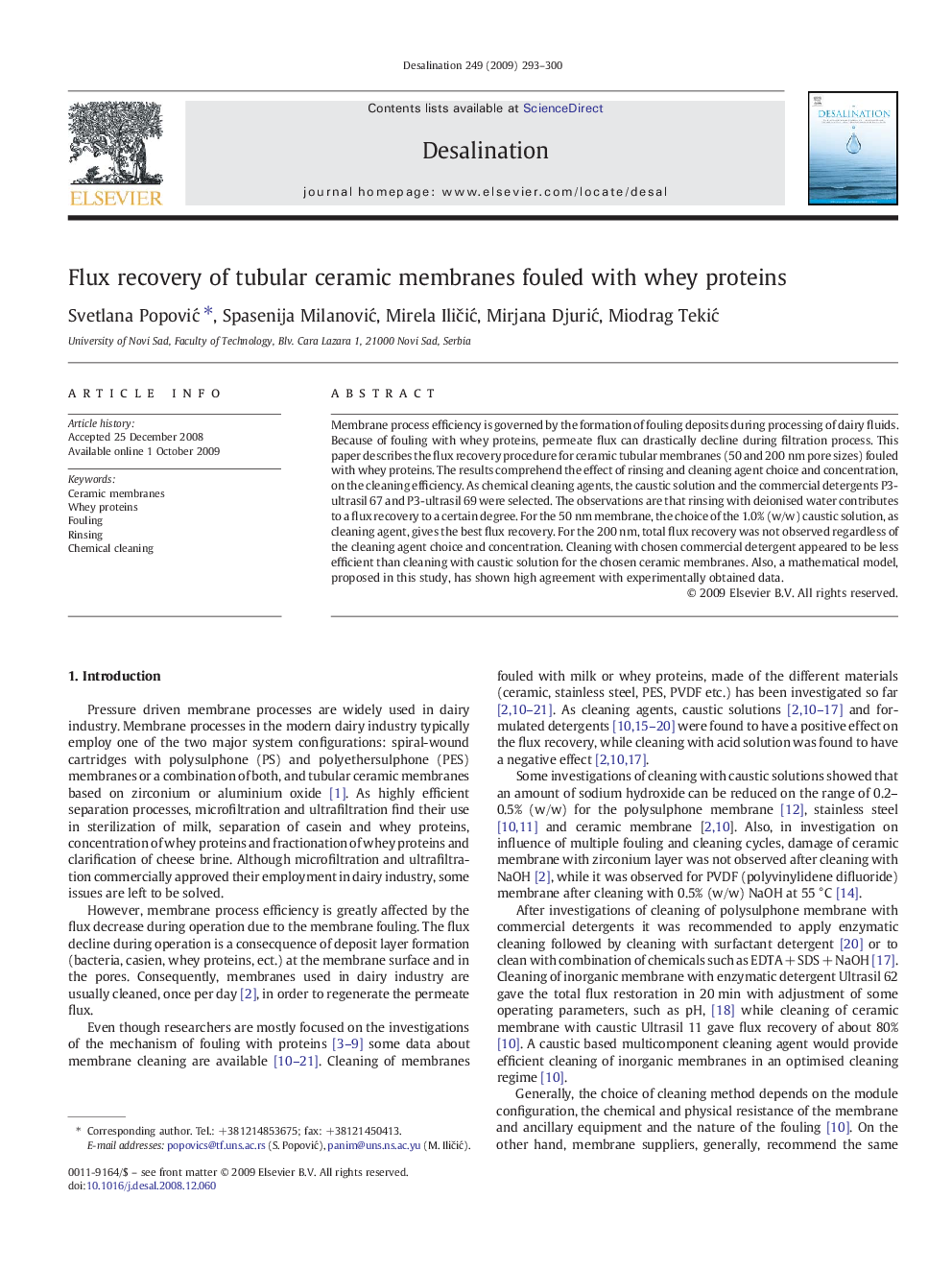| Article ID | Journal | Published Year | Pages | File Type |
|---|---|---|---|---|
| 626156 | Desalination | 2009 | 8 Pages |
Membrane process efficiency is governed by the formation of fouling deposits during processing of dairy fluids. Because of fouling with whey proteins, permeate flux can drastically decline during filtration process. This paper describes the flux recovery procedure for ceramic tubular membranes (50 and 200 nm pore sizes) fouled with whey proteins. The results comprehend the effect of rinsing and cleaning agent choice and concentration, on the cleaning efficiency. As chemical cleaning agents, the caustic solution and the commercial detergents P3-ultrasil 67 and P3-ultrasil 69 were selected. The observations are that rinsing with deionised water contributes to a flux recovery to a certain degree. For the 50 nm membrane, the choice of the 1.0% (w/w) caustic solution, as cleaning agent, gives the best flux recovery. For the 200 nm, total flux recovery was not observed regardless of the cleaning agent choice and concentration. Cleaning with chosen commercial detergent appeared to be less efficient than cleaning with caustic solution for the chosen ceramic membranes. Also, a mathematical model, proposed in this study, has shown high agreement with experimentally obtained data.
